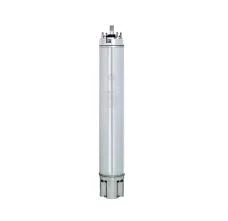Dec . 15, 2024 02:25 Back to list
Three-Phase Water Pump Systems for Efficient Fluid Transportation and Management Solutions
The Importance of 3-Phase Water Pumps in Modern Applications
Water pumps are vital components in various industrial, agricultural, and municipal applications. Among the types of pumps available, 3-phase water pumps stand out due to their efficiency, reliability, and versatility. This article explores the significance of 3-phase water pumps, their working principles, advantages, and common applications.
Understanding 3-Phase Water Pumps
A 3-phase water pump operates using a three-phase power supply, which is a type of electrical power distribution that can deliver a continuous and consistent power output. Unlike single-phase pumps that utilize only one alternating current (AC) circuit, 3-phase pumps harness three AC circuits that are offset by 120 degrees from each other. This configuration allows for a smoother and more efficient operation, particularly in high-demand scenarios.
Working Principles
At the core of a 3-phase water pump is an electric motor that drives the pump's impeller, creating suction that draws water into the pump. The three-phase motor is connected to the electrical supply, and when energized, it generates a rotating magnetic field that induces motion in the rotor. This rotation powers the impeller, which efficiently moves water through the pump and into the distribution system.
The speed of the motor can be controlled through variable frequency drives (VFDs), allowing for precise control over the flow rate and pressure of the water being pumped. This adaptability is critical in applications where water demand may fluctuate frequently.
Advantages of 3-Phase Water Pumps
1. Efficiency 3-phase water pumps are generally more efficient than their single-phase counterparts. With lower energy losses during operation, they convert more electrical energy into mechanical energy, which results in reduced operational costs and enhanced performance.
2. Power Output These pumps can handle larger workloads, making them suitable for environments that require high flow rates and significant pressure. This capability is essential in industrial and agricultural settings where water needs can vary dramatically.
3. Reliability The consistent power supply offered by 3-phase systems leads to reduced vibration and noise during operation. This stability translates to longer lifespan and reduced maintenance requirements, making them a cost-effective solution in the long run.
3 phase water pump

4. Versatile Applications 3-phase water pumps can be employed in a wide range of applications, from irrigation systems and wastewater treatment plants to manufacturing facilities and cooling systems in large buildings.
5. Reduced Starting Current 3-phase motors can produce a lower starting current compared to single-phase motors. This characteristic is particularly beneficial in large installations, as it minimizes the impact on electrical systems during pump start-up.
Common Applications
3-phase water pumps are widely used across various sectors
- Agriculture They are essential for irrigation systems, enabling farmers to efficiently transport water over long distances, thereby optimizing crop production.
- Municipal Water Supply Many water treatment facilities rely on these pumps to ensure a steady supply of potable water to urban areas, supporting public health and daily life.
- Industrial Processes In manufacturing, 3-phase pumps are used for cooling systems, chemical processing, and removing waste materials from production lines.
- Construction These pumps are also valuable in dewatering applications on construction sites, helping to manage groundwater levels and prevent flooding.
Conclusion
The role of 3-phase water pumps in our modern world cannot be overstated. Their efficiency, reliability, and versatility make them a cornerstone in numerous industries, contributing to economic growth and sustainable practices. As technology continues to evolve, the advancements in pump design and operation promise to further enhance the performance and capabilities of 3-phase water pumps, ensuring they remain an integral part of water management systems for years to come. Whether in agriculture, industry, or municipal services, these pumps are key to meeting the growing demands for water in an increasingly resource-conscious world.
-
Submersible Water Pump: The Efficient 'Power Pioneer' of the Underwater World
NewsJul.01,2025
-
Submersible Pond Pump: The Hidden Guardian of Water Landscape Ecology
NewsJul.01,2025
-
Stainless Well Pump: A Reliable and Durable Pumping Main Force
NewsJul.01,2025
-
Stainless Steel Submersible Pump: An Efficient and Versatile Tool for Underwater Operations
NewsJul.01,2025
-
Deep Well Submersible Pump: An Efficient 'Sucker' of Groundwater Sources
NewsJul.01,2025
-
Deep Water Well Pump: An Efficient 'Sucker' of Groundwater Sources
NewsJul.01,2025
-
 Submersible Water Pump: The Efficient 'Power Pioneer' of the Underwater WorldIn the field of hydraulic equipment, the Submersible Water Pump has become the core equipment for underwater operations and water resource transportation due to its unique design and excellent performance.Detail
Submersible Water Pump: The Efficient 'Power Pioneer' of the Underwater WorldIn the field of hydraulic equipment, the Submersible Water Pump has become the core equipment for underwater operations and water resource transportation due to its unique design and excellent performance.Detail -
 Submersible Pond Pump: The Hidden Guardian of Water Landscape EcologyIn courtyard landscapes, ecological ponds, and even small-scale water conservancy projects, there is a silent yet indispensable equipment - the Submersible Pond Pump.Detail
Submersible Pond Pump: The Hidden Guardian of Water Landscape EcologyIn courtyard landscapes, ecological ponds, and even small-scale water conservancy projects, there is a silent yet indispensable equipment - the Submersible Pond Pump.Detail -
 Stainless Well Pump: A Reliable and Durable Pumping Main ForceIn the field of water resource transportation, Stainless Well Pump has become the core equipment for various pumping scenarios with its excellent performance and reliable quality.Detail
Stainless Well Pump: A Reliable and Durable Pumping Main ForceIn the field of water resource transportation, Stainless Well Pump has become the core equipment for various pumping scenarios with its excellent performance and reliable quality.Detail
